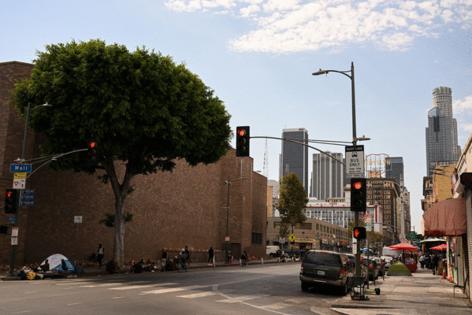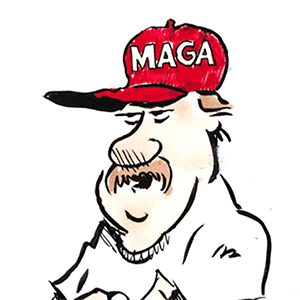Ahead of the 2028 Olympics, Los Angeles launches a program to expand shade across the city
Published in Science & Technology News
LOS ANGELES — As heat waves grow longer and more intense across Southern California, the absence of shade is becoming a serious public health concern — but vast stretches of Los Angeles remain dangerously exposed.
Research shows shaded areas can have a “heat burden” — a combined measure of temperature, humidity and wind — up to 68–104 degrees less than nearby sun-exposed areas. Quality shade can also reduce UV radiation exposure by up to 75% and help prevent up to 50% of emergency-room visits during heat events.
With the 2028 Olympics and other global events set for L.A. on the horizon, a coalition of universities, nonprofits and local agencies has launched ShadeLA, an initiative to expand cooling infrastructure across the city. Led by USC Dornsife Public Exchange — a program that connects researchers with policymakers — and UCLA’s Luskin Center for Innovation, the project is focused not only on where shade is needed most, but also on how to build it in ways that last.
“The climate that made L.A. so idyllic and attractive in the 20th century is now becoming deadly for many of our neighbors,” said Edith de Guzman, adjunct assistant professor at UCLA’s Department of Urban Planning and co-lead on the project. “And simultaneously, our city is shrinking — because we can use less of it. There are fewer places we can be safely and in a way that meets thermal comfort.”
ShadeLA brings together agencies such as L.A. County’s Chief Sustainability Office, the County Metropolitan Transportation Authority, and a network of nonprofits including City Plants, North East Trees and TreePeople.
“We need a lot of different people coming together to work on the issue,” said Monica Dean, director of the Climate and Sustainability Practice at USC Dornsife Public Exchange and co-lead on the project. “And we also don’t need to just add shade. We also need to take care of and maintain the shade we have.”
Unlike many other past greening campaigns around Los Angeles — such as Million Trees LA, which aimed to plant a million trees in a decade — ShadeLA has not set a strict goal for the number of trees or structures it hopes to build.
Instead, the initiative emphasizes what it calls “the quality of shade,” using new high-resolution mapping tools to calculate how much usable, ground-level coverage people actually experience in public spaces where they walk, wait or gather. Those data help participants decide what projects to pursue in order to make the biggest difference, whether that’s planting a large-canopy tree on one corner, redesigning a bus stop to provide more overhead cover or creating a pop-up cooling zone in a high-traffic area.
Such projects are especially important as Los Angeles starts preparing for the 2028 Olympics, which will draw millions of additional people to the city. “We’re really thinking of the 2028 Games and the preceding mega events as a point of leverage. We’re hoping to have those events ... spur Los Angeles to do the right thing and have a legacy,” De Guzman said.
That approach builds on the USC Urban Trees Initiative, a five-year research effort that mapped shade gaps across the city and identified specific areas where new trees could have the greatest effect. In Lincoln Heights and Boyle Heights, for example, the study found room for nearly 100 additional trees in Hazard Park, more than 50 at Murchison Street Elementary School, 22 at Hillside Elementary, and over 180 within the Ramona Gardens public housing complex, where residents live next to busy freeways with little natural cover. These areas, researchers say, are among the highest-need zones for planting because they combine high pedestrian activity, low canopy cover and limited access to air conditioning.
TreePeople, a longtime leader in Southern California’s urban forestry movement, has outlined plans for thousands of new trees in the region — not as part of a citywide quota, but as one piece of ShadeLA’s broader push to create high-quality, lasting shade. The group also facilitates volunteer planting events and hosts workshops to teach people how to help the trees survive.
As Marcos Trinidad, TreePeople’s senior director of forestry, noted, planting trees alone won’t solve the problem if the city and Olympic organizers don’t commit resources to long-term care.
“What’s missing right now is a firm commitment from the city and Olympic organizers — a number, a budget, something we can leverage,” Trinidad said. “Without that, we risk falling into the same pattern we’ve seen before, where trees get planted without resources to make sure they survive. We don’t want to just put numbers on paper — we want a living, lasting canopy.”
Still, he is optimistic about ShadeLA. “Our hope is that the collaboration will remain and be the vehicle that we can use for increasing canopy shade past the Olympics,” Trinidad said.
Ultimately, project leaders hope that the initiative changes how people see the city — leading them to recognize shade not just as a comfort, but also as essential infrastructure for community health and resilience.
“I really want us to start thinking as Angelenos — to sort of train our eyes to see our neighborhoods differently and see where there are opportunities” for shade, Dean said. “Because the truth is, each of us has some agency and some capacity to be stewards of this civic resource.”
©2025 Los Angeles Times. Visit at latimes.com. Distributed by Tribune Content Agency, LLC.







Comments